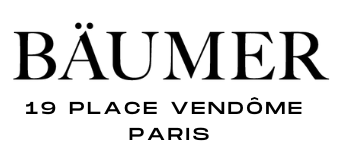Discover everything you need to know about mother-of-pearl: its origin, its material, its manufacture, its virtues, its technical characteristics and its colors...
Nacre is a white, smooth and iridescent organic deposit covering the inside of the shells of certain living molluscs. When a foreign body inserts itself between the shells of bivalve molluscs, the mother-of-pearl covers it to soften the irritation it causes, thus making a pearl. A real spectacle of the work of nature and the marine world, which arouses the desires of all lovers of shells and mother-of-pearl.

What is mother-of-pearl?
The name "mother-of-pearl" comes from
Arabic "naqqâra" or Persian "nakar", and its material
is composed of organelle-bound aragonite crystals
by a protein called conchiolin.
It is also interesting to know that it is technically named
"Mother of pearl" in English, or "mother of the pearl",
because of its involvement and its virtues in the process of mineral making
pearls. It is when an irritating foreign element enters the shell of
these molluscs, these also secrete nacre layer after layer
all around, in order to protect themselves from it, thus forming one or more pearls. Mother-of-pearl is often used for fashioning jewelry such as earrings, bracelets and necklaces.
This material from seashells is renowned for its silvery color and
iridescent reflections, but also for its quality and its mineral aspect.
What are the characteristics and colors of
mother-of-pearl?
Like pearls, mother-of-pearl formed from crystals
of aragonite, bound by a protein called conchiolin, can be
different colors, the latter depending on several material factors
technical and organic:
These are the colors of the conchiolin secreted by the
mollusc living in water, following the introduction of matter from a body
foreign, which are at the origin of the white mineral coloring of the mother-of-pearl,
and whose iridescence differs from one species to another. The environment of
mollusk and its location in the world, the pigments contained in the water, the
its depth and its salinity can influence the color of the
aragonite crystals, materials composing the white mother-of-pearl with reflections
silvery and iridescent, a real spectacle of the work of the marine ecosystem.
What is the place of mother-of-pearl in history?
Archaeologists with a desire for discovery have been able to find ornaments and objects in
pearly shells dating from prehistoric times.
However, where the pearl is the subject of many stories and testimonies
historical, this is not the case with mother-of-pearl before the Italian Renaissance, where
the thick shells, with mother-of-pearl layers of two different colors,
were used to sculpt cameos called shell-cameos. This fashion
of the beautiful world was imported into France during the Italian wars with François
I, who brought for the work of famous Italian engravers such as Matteo
dal Nassaro, then appointed director of the Mints.
But if only the mother-of-pearl of the shells (as well as the fine pearls) were
exploited until the 13th century, the development of cultivation methods
minerals at that time prompted some people with wealth cravings to
try to "naturally" pearl small or large objects
objects. For example, some Chinese traders were pearlizing multiple
objects such as small statues of iridescent Buddhas, by introducing these
foreign bodies between the valves of live pearl molluscs. Moreover,
the pearly shell also served as currency. Indeed, this use was important
in the maritime exchanges of certain peoples: Indian Ocean, Atlantic
Pacific and the Caribbean. However, this currency was not used in
France.
The virtues and properties of mother-of-pearl
Today, mother-of-pearl, a spectacle of virtues and benefits, stimulates
affection and solicitude while reassuring and helping to develop the
personal conscience and protecting from emotional wounds. She
symbolizes the 42nd wedding anniversary. In lithotherapy, this organic mineral with iridescent reflections would have other benefits and properties, acting in symbiosis on the body and
the mind. Thus, mother-of-pearl would promote bone regeneration (rheumatism,
arthritis, calcium deficiency) and fluid circulation in the body. THE
pearly stones are a symbol of technique and life.
Many are lovers of this material
silver-colored organic material from live seashells when
the elaboration of their varied jewelry, such as earrings,
bracelets and necklaces. Thus, some even prefer mother-of-pearl from a
living shell with stones, a more classic option. Its iridescent appearance
is reminiscent of the brilliance of an agate stone, but its quality
resides above all in its properties and in its technical origin from a
shell full of life which, in fact, is fascinating.












